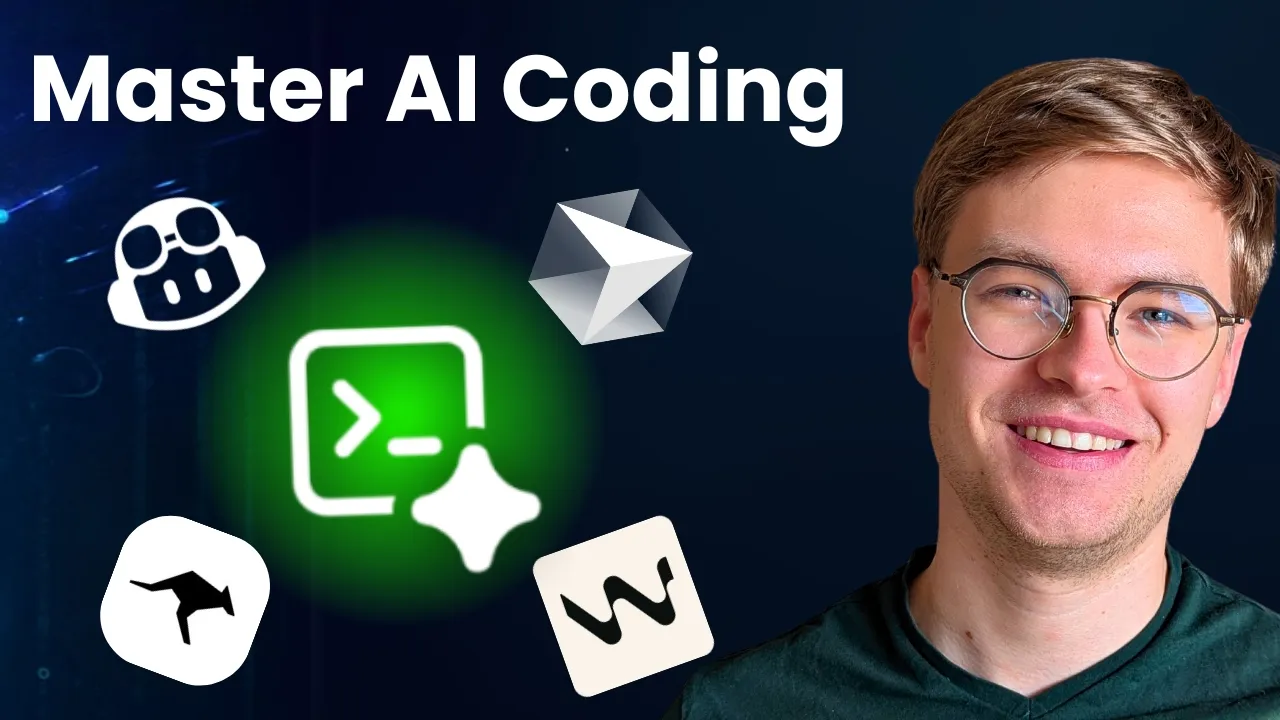The AI Coding Framework that Always Works
Most developers approach AI coding assistants like they’re ordering fast food: throw everything at once and hope for the best. But that rushed approach is exactly what’s causing those frustrating, half-baked results.
After countless hours of trial and error with AI coding tools, a pattern emerged that changed everything for me. The difference between chaotic, unreliable outputs and consistent, production-ready code wasn’t about which AI model you used or how detailed your prompts were. It came down to structure breaking the work into three deliberate phases. This systematic approach aligns with broader principles of building production-ready AI applications where structured processes lead to better outcomes.
The Hidden Cost of Information Overload
When you dump a complex feature request on an AI assistant without context, you’re essentially asking it to be architect, developer, and mind reader simultaneously. The AI attempts to infer your application structure, guess at your coding patterns, and imagine your requirements - all while trying to generate actual code.
This cognitive overload leads to predictable failures: inconsistent coding styles, features that don’t integrate with existing systems, and implementations that miss crucial requirements. The AI isn’t failing because it lacks capability; it’s drowning in ambiguity.
Phase One: Building the Foundation
The first phase focuses on establishing comprehensive context about your existing application. Think of this as creating a detailed map that the AI can reference throughout the development process.
This isn’t just about documenting what files exist. It’s about capturing the application from multiple perspectives - architectural patterns, data flow, user interactions, and business logic. When an AI assistant understands not just what your code does but why it’s structured that way, it can make intelligent decisions that align with your existing patterns.
The beauty of this approach is that once created, this foundational documentation serves every future interaction. Instead of repeatedly explaining your authentication system or database structure, the AI already knows. This accumulated context becomes a force multiplier for every subsequent feature.
Phase Two: Thinking Before Building
The second phase shifts focus from code to requirements. Here, the AI takes on a different role - that of a product manager rather than a developer. This separation of concerns mirrors successful human development teams where planning and implementation are distinct activities.
By explicitly requesting a requirements document before any code generation, you force a thoughtful consideration of user stories, edge cases, and success criteria. This phase catches ambiguities and assumptions early, when they’re easy to address, rather than after hundreds of lines of code have been written.
The requirements phase also creates a shared understanding between you and the AI about what “done” looks like. This clarity eliminates the back-and-forth of “that’s not what I meant” that plagues many AI coding sessions.
Phase Three: Incremental Implementation
The final phase embraces the power of starting simple. Rather than requesting a fully-featured implementation, you begin with a minimum viable version - often with static data and basic functionality.
This approach works because it aligns with how AI models best operate. They excel at focused, well-defined tasks but struggle with massive, multi-faceted requests. By requesting an MVP first, you get working code quickly that can be iteratively enhanced.
The psychological benefits are equally important. Seeing a functional interface, even with dummy data, provides immediate validation and reveals issues early. It’s far easier to refine something tangible than to debug an ambitious attempt that tried to do everything at once.
The Compound Effect
What makes this three-phase framework powerful isn’t just each individual phase - it’s how they build upon each other. The architectural documentation from phase one informs the requirements in phase two. Those requirements guide the implementation in phase three. And each iteration adds to the shared context, making future development even smoother.
This creates a virtuous cycle where the AI assistant becomes more effective over time, not through training or updates, but through the accumulated context and patterns you’ve established together. It’s the difference between starting from scratch with every request and building on a solid foundation. For developers building comprehensive AI engineering portfolios, this systematic approach ensures each project builds meaningfully on previous work.
Beyond Individual Features
The framework’s benefits extend beyond single feature development. When multiple developers work on a project, the documentation and requirements become a shared language. New team members - human or AI - can quickly understand the system and contribute effectively.
The approach also naturally creates a audit trail of decisions and progress. Each requirement document and implementation status update tells the story of how your application evolved, making it easier to understand why certain choices were made.
Making It Work in Practice
The key to success with this framework isn’t perfection - it’s consistency. Even rough architectural documentation is better than none. Simple requirement documents outperform verbose feature requests. Basic MVPs that work beat ambitious attempts that don’t.
Start small. Document one section of your application. Write requirements for one feature. Build one simple implementation. As you experience the improved results, expanding the approach becomes natural.
The three-phase framework transforms AI coding from a game of chance into a reliable process. By giving structure to your interactions with AI assistants, you create the conditions for consistent, high-quality results. This methodology becomes especially valuable for AI engineers focused on practical implementation over theoretical knowledge.
To see exactly how to implement these concepts in practice, watch the full video tutorial on YouTube. I walk through each step in detail and show you the technical aspects not covered in this post. If you’re interested in learning more about AI engineering, join the AI Engineering community where we share insights, resources, and support for your learning journey.

